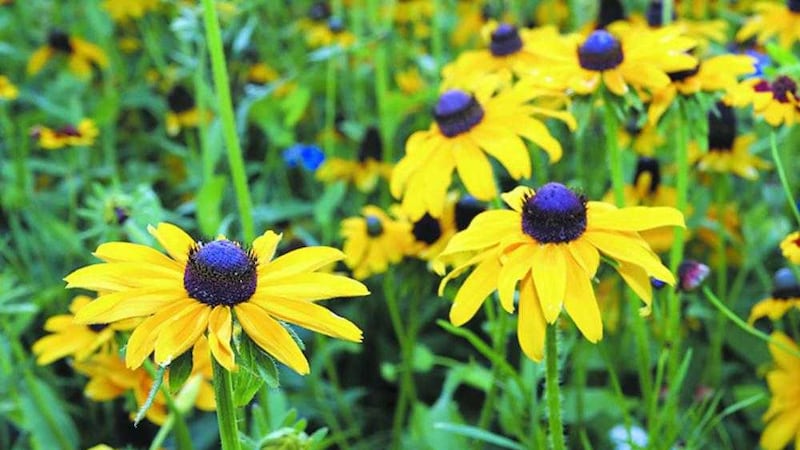ASK a child to draw a flower and in all likelihood it will look like a daisy. There’ll be a circular area in the centre from which lots of petals will emanate.
There are hundreds of other shapes of flower, including everything from the thistle-like spheres of echinops through to the spikes of verbascum, yet nine times out of ten the archetypal daisy springs to mind. The distinctive flower is actually two flowers in one as the petals count as one and the cluster of tiny disc petals that form the 'eye' is technically another.
The popularity of the daisy-type flower, or composite flower, shouldn’t come as a surprise when you see how extensive the Asteraceae family – AKA the aster or sunflower family – actually is.
To briefly blind you with stats, there are 23,000 species, more than 1,600 genera and 13 sub-families. While most members of the Asteraceae family are herbaceous, they also count shrubs, vines and trees among their number. You’ll find them on all continents bar Antarctica from polar regions to the Tropics and on coastal plains to high mountain ranges.
Looking around my own garden again highlights their prevalence. In the orchard-cum-games area there are Bellis perennis – the common daisy – in abundance. On one large patch of grass closer to the house, however, I’ve managed to banish them entirely, though not with glyphosate or a weed and feed formula but by persistently digging them out wherever they appeared.
Then there’s the daisy bush, Olearia haastii – which for years has filled a big evergreen space in my shelter belt. For a long time I just called it “the prickly olearia”. It has clusters of white flowers and a good resistance to salty, coastal winds. Its close relative Olearia traversii is drabber and popular as a hedging plant though I can testify that the more ornamental of the two is also a good barrier shrub.
Of the cape daisies, the beguiling Osteospermum ‘Lady Leitrim‘ is mine and many gardeners‘ favourite. Its charm lies the flowers’ shades of purple, lilac and mauve and their tendency to open to the sun then close as the light fades.
A great ground cover plant that blooms all summer, it too is tolerant of costal conditions. The Osteospermum’s African homeland may be thousands of miles from Rossglass overlooking Dundrum Bay, a mile from my Co Down home, but similarly the native oxe-eye daisy takes to the sunny but harsh conditions just above the tide mark along the shoreline.
At this time of year we are privileged to witness the splendour of some of daisy family's finest stars.
Rudbeckia ranks among my favourite late summer/early autumn flowers, as they will brighten up the dullest September morning. Originating on the North American prairies, an established clump will produce scores of yellow flowers with a black centre.
The 'Goldsturm' cultivar has the Royal Horticultural Society's AGM seal of approval and is particularly popular, reaching up to 75cm and flowering from August through to October.
Echinacea purpurea is similar in stature to rudbeckia but this perennial aristocrat most often comes in pink. Difficult to get established from seed and sensitive to winter waterlogging, Echinacea purpurea requires quantity for best results though individually its flowers are as captivating as any. A great plant to combine with grasses for a prairie effect, ‘Rubinstein’ is one of the most reliable varieties.
Treading that thin line between eccentric and garish, there is no denying the ability of asters to light up a space when all around vivid colour is fading to autumn hues. Asters come in a range of colours from pinks to reds and blues, and they are also great for attracting butterflies.
'Little Carlow' is my favourite as it's much easier managed than the larger members of the aster family. Its reliability has deemed it worthy of the RHS's Award of Garden Merit.








